8 Dirty Secrets of Homemade Grocery Store Foods
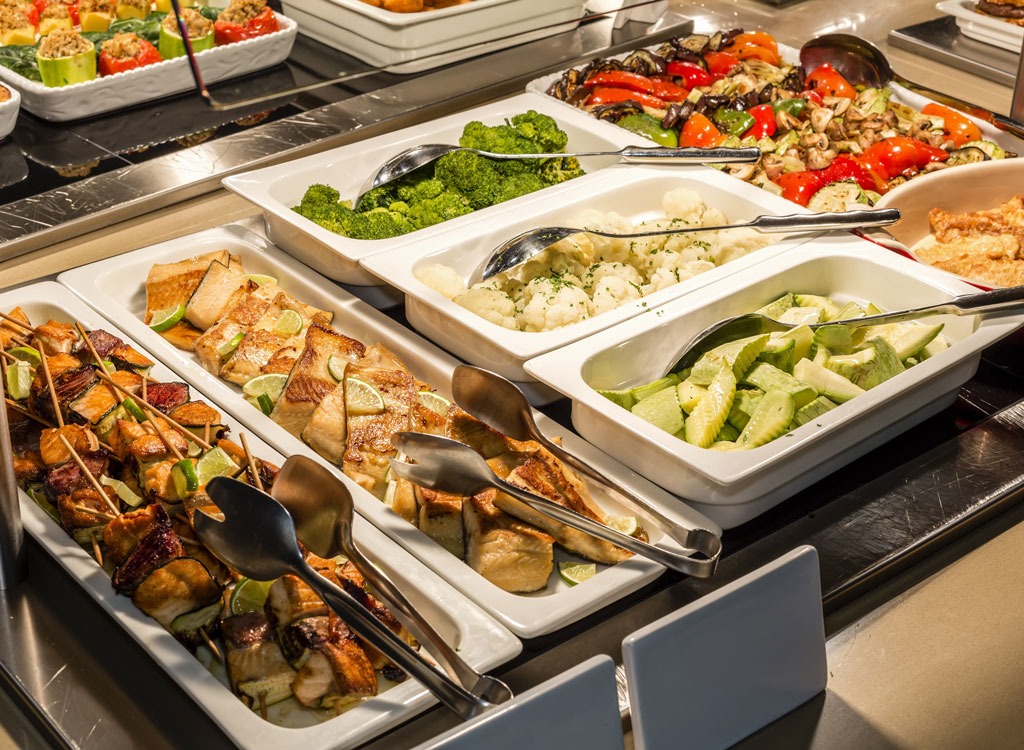
Years ago, supermarkets were places where people, you know, bought the ingredients they needed to make their favorite dishes. Once in awhile, they scooped up a rotisserie chicken for an impending hectic evening. These days, however, hot bars filled with tempting trays of meatballs, aromatic Indian cuisine, mouthwatering pasta salads, and fresh, vibrant veggies seem to be multiplying faster than the Jolie-Pitt clan. We'd even argue that they're crowding out traditional grocery items. Nearly $30 billion of prepared meals are sold each year, with some industry experts referring to them as the new impulse purchase—the modern-day equivalent of grabbing a soda at the checkout lane.
"People love the convenience factor," says Alissa Rumsey, registered dietitian and Spokesperson for the Academy of Nutrition, of the growing trend. "Having prepared foods to choose from at the grocery store can seem easier and cheaper than stopping at a restaurant or ordering takeout." And unsurprisingly, grocers have put a great deal of effort into convincing time-strapped health-conscious customers that that's the case. But as we suspected, it's not. After a bit of digging, it became clear that pre-made grocery dishes are harboring some dirty secrets—many of which can get in the way of your health and weight loss goals. Read on to discover the must-know unsavory truths and get to know these 23 Scams and Sneaky Tricks at the Grocery Store, too!
It's Not Always Healthier Than Take Out
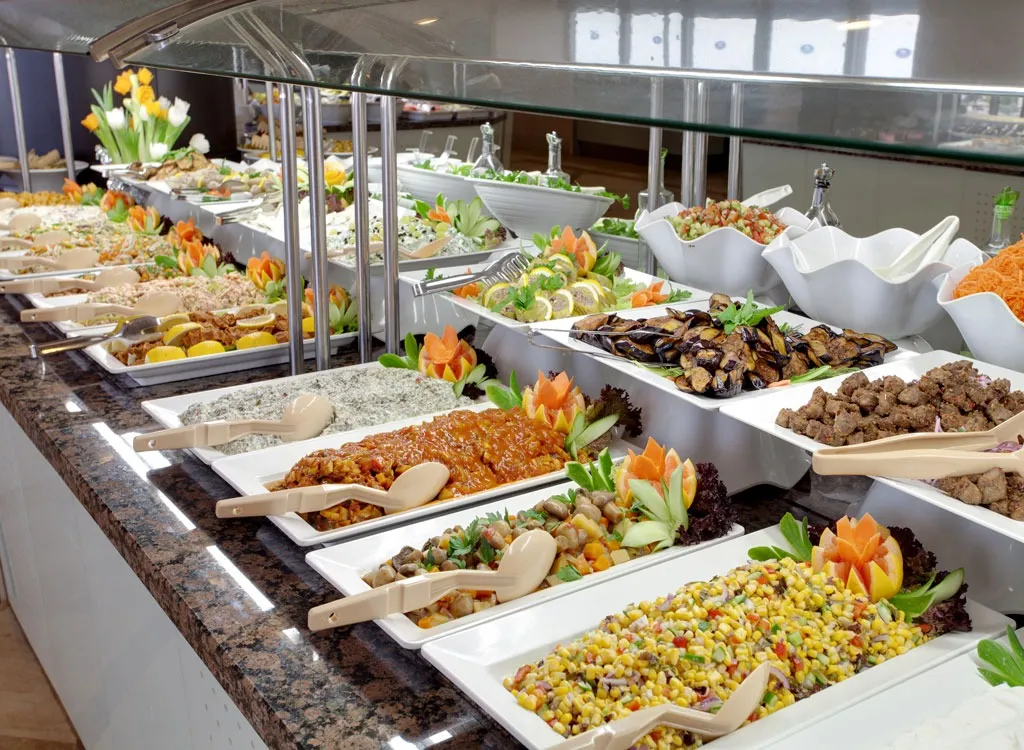
Just because you spoon it into a to-go container yourself doesn't automatically make it healthier for you than restaurant or take out fare, Rumsey says. "Many pre-made dishes are high in calories and loaded with salt and fat. No matter where you buy it, anything in creamy or heavy sauces is going to end up being less healthy than things fresher choices like salads, steamed or roasted veggies, rotisserie chicken, or grilled fish."
It's Been Spiked With Chemicals
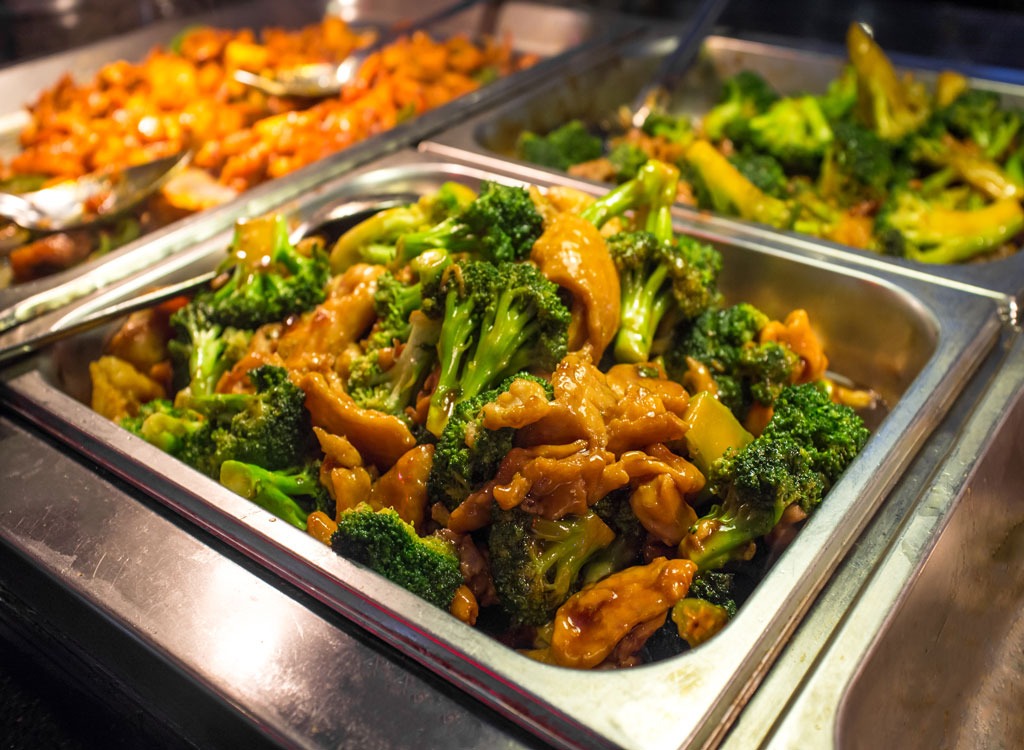
Pre-made supermarket grub also contains many of the same eyebrow-raising ingredients as the stuff you get at chain restaurants. Wegmans'—one of the few grocery stores that are transparent about their ingredients—will have to be the unfortunate example, despite its status as #1 among the The Top 15 Grocery Stores in the U.S.. Their sesame chicken and vegetable lo mein, for example, contains artery-clogging hydrogenated soybean oil and TBHQ, a form of butane (i.e. lighter fluid) the FDA allows in our food. (Gag.)
Other unsavory ingredients we found lurking in prepared grocery store goods? Sodium benzoate, a preservative, was mixed into mashed potatoes and caramel coloring, a potential carcinogen, in various chicken dishes. And if you didn't already assume as much, these ingredients aren't found in any home kitchen in in the world. While many grocery stores don't reveal their ingredients, you can try to look them up online before you shop or ask an associate when you're in the store if they have access to the information. At the very least, you should look into your go-to faves to ensure you're not bringing home chemical doused fare each week.
It May Look Homemade— But That Doesn't Mean It Is

Which brings us to our third point: All those homemade-looking bowls of corn salad, pasta, and turkey burgers you see behind the deli counter glass aren't necessarily homemade. Sometimes stores will buy frozen food, heat it up, and serve it as "fresh" from the counter, which is oftentimes the case with pastries and pizza. "It's important to ask store clerks what is made in-house and what is not to ensure you're not unknowingly reaching for something that's high in salt, sugar, or fat," advises Rumsey. "Clerks should be able to tell you more details about the food item, like if it was made from scratch or if they used a packaged product instead." If you don't feel comfortable asking or if the person helping you is totally clueless, your best bet is to steer clear of the pizza, mashed potatoes, grain- and pasta-based salads and entrees, anything with a sauce, and all bakery products, including pastries, bagels, cookies, and cakes, as these are the most likely to be frozen or made off premises in a factory.
It's Not Always Made On Premises & Some of It's Frozen
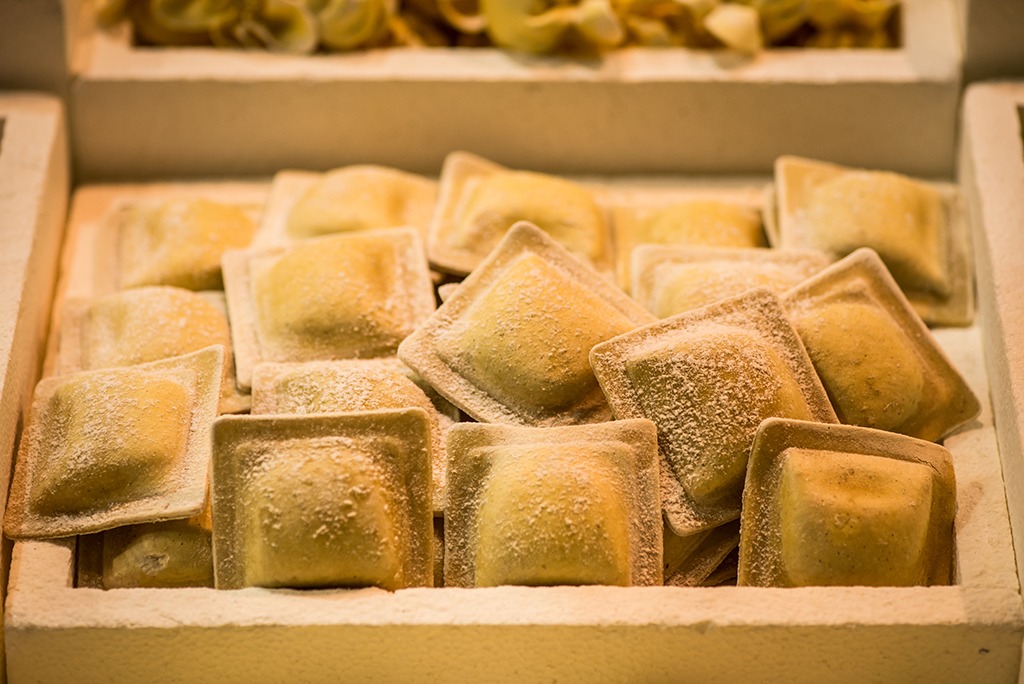
While the mouthwatering cooking scents may have lured you to the hot-food bar, don't assume that the smells are coming from a busy kitchen lined with Top Chef-worthy professionals—because it's probably not. According to an investigation by Consumer Reports, many prepared supermarket dishes aren't even prepared in the same zip code as the stores in which they're sold—even if they're labeled as "made in-house." The reason? Building a kitchen in each store is expensive. To keep costs down and profit high, some chains prep large batches of ready-to-serve dishes in centralized kitchens and then deliver them to their stories, while others simply have frozen or partially baked fare delivered to their stores and have on-premises staff reheat and garnish it to make it look fresh. "[The cookies] arrive raw and we bake them and package them," one Costco employee wrote on Reddit. "We do bake plenty of stuff from scratch (the birthday cakes, apple pies, pumpkin pies) but some items are brought in from outside and just thawed and packaged or baked and packaged." Again, the best way to find out where the food comes from and how it's prepared is to ask.
DON'T MISS: The 46 Best Supermarket Shopping Tips Ever
A Lot of It's Loaded With Salt
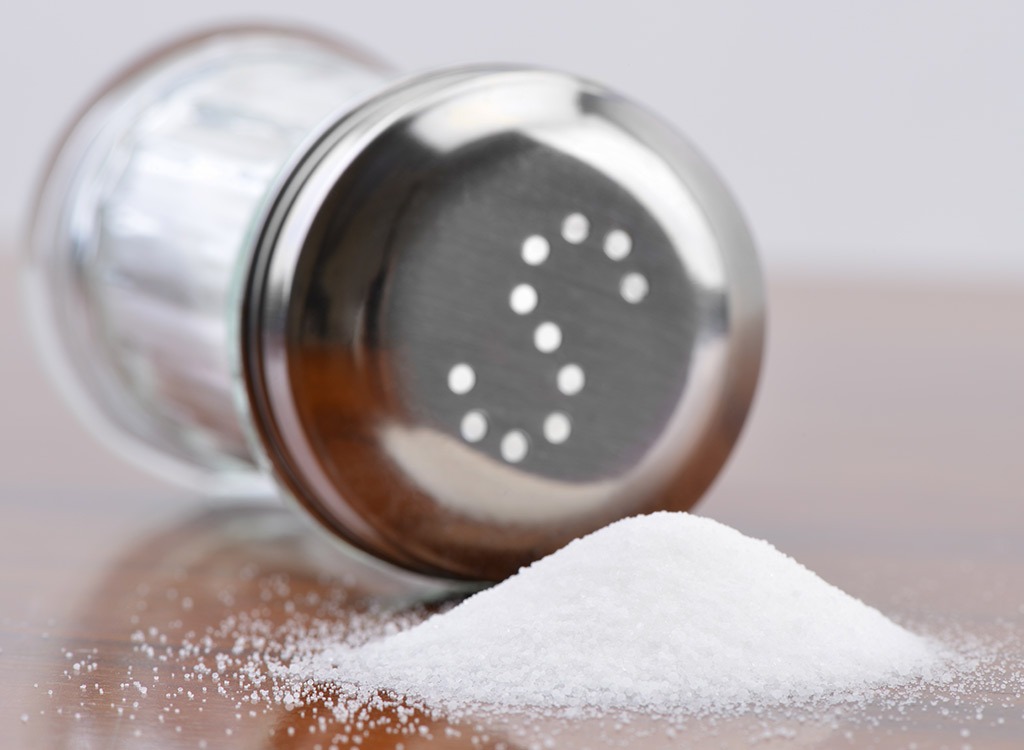
About 75 percent of the salt in Americans' diets comes from processed and restaurant foods. And since we just told you how much of the ready-to-serve dishes in grocery stores is far from homemade, it should come as no surprise that it can contain a ton of salt. According to a recent investigation, each 6-ounce mini turkey meatloaves from The Fresh Market contains 891 milligrams of sodium. For some perspective, that's what you'd find in four and a half individual packets of salt. Another sodium bomb: Wegmans macaroni and cheese. One serving has 40 percent of the day's recommended intake of salt. Not only is consuming excess salt dangerous for those with high blood pressure, it can stall results for those looking to lose weight. For every extra gram of salt you eat in a day (that's a mere one-fifth of a teaspoon), your risk of obesity climbs by 25 percent, according to a study at Queen Mary University in London. The reason: Researchers speculate that sodium alters our metabolism, changing the way in which we absorb fat.
The Nutrition Information May Not Be Correct
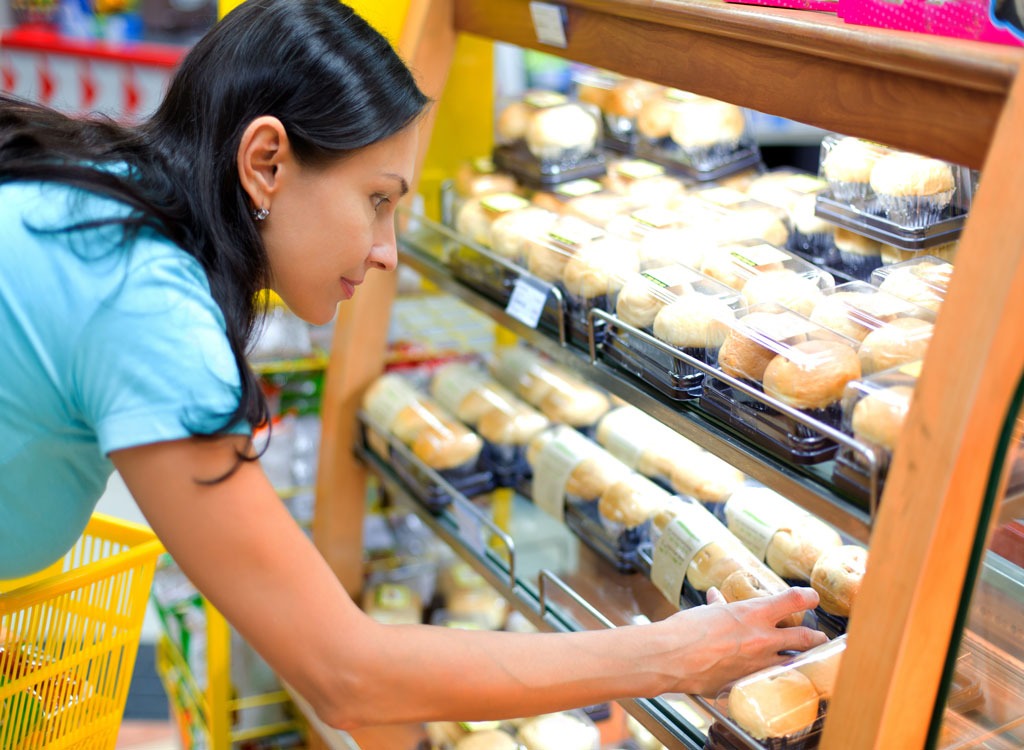
Woohoo! You found the nutrition information for your favorite prepared supermarket dishes. Here's the bad news: there's a good chance it's incorrect. In Consumer Reports' investigation, they found a wide variation in nutrients from store to store—despite their identical food labels. For example, ShopRite's chicken marsala ranged from 359 milligrams of salt per 6-ounce serving to 1,003 milligrams. And although The Fresh Market stated that their turkey meatloaf had 7 grams of fat, Consumer Reports' independent testing found that the dish actually had an average of 18 grams per serving. So how can you ensure you're given the opportunity to make an educated decision? "You can get a general idea of the nutrition facts of a dish using a nutrient counting app on your phone like Lose It or My Fitness Pal. While it won't be exactly the same as the dish in the store, it will give you a good idea if it's a dish that is normally high in salt, fat, or calories," Rumsey tells us.
It Contains Processed Ingredients
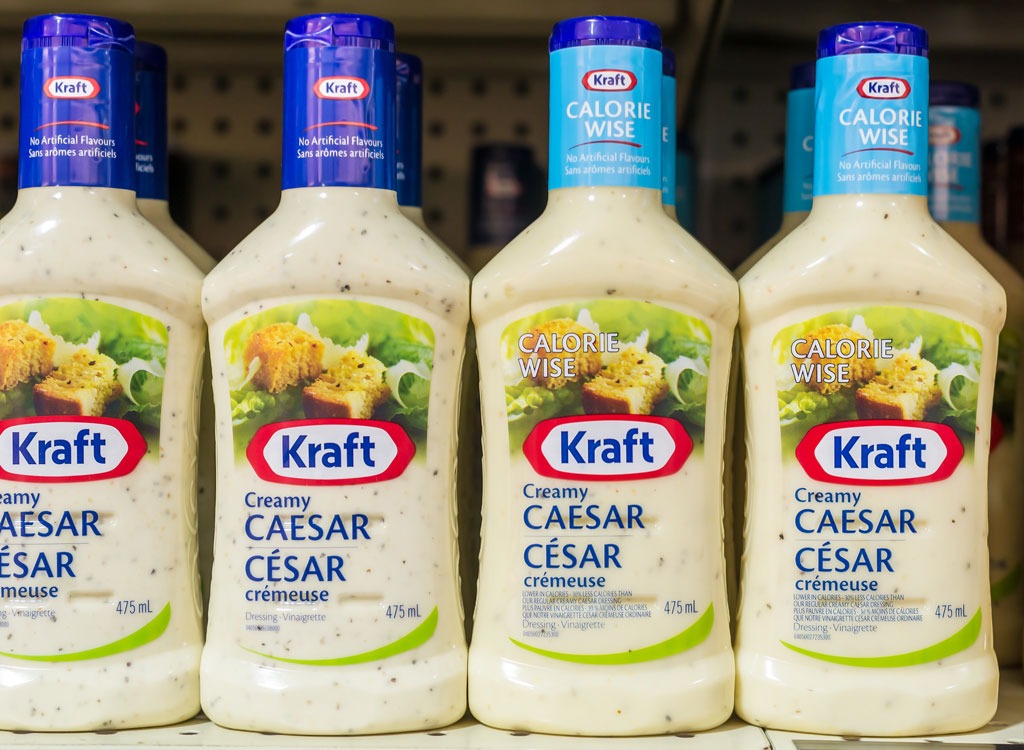
Many consumers turn to pre-made "homemade" meals in an attempt to cut back on processed food. But even if the majority of the dish you're eating is truly homemade, many stores rely on packaged sauces and dressings to kick their creations across the finish line, so to speak. The sauce that was drizzled on The Fresh Market's turkey meatloaf, for example, wasn't made from fresh ingredients as many customers may assume; it was actually bottled poppyseed salad dressing—a major salt, sugar, and chemical mine.
So, What's Okay To Buy?

The dishes that are considered to be safe restaurant orders are typically those that get the green light in the pre-made section of the grocery store, too. "As a general rule of thumb, choose foods that are grilled, broiled or baked and skip anything pan-fried, fried, battered, crunchy, or crispy," cautions Rumsey. "Avoid cream-based sauces and anything that looks very oily. Things like salads, steamed or roasted veggies, rotisserie chicken, or grilled fish are usually safe bets. And most importantly, portion control is key. Minimize the damage by filling up half your plate with non-starchy vegetables, one-fourth of your plate with protein, and one-fourth with a grain or starch." Which, as an FYI, is what you should aim to do at all of your meals.
And What Is Always Better to Make at Home?

You may not want to spend your after-work hours chopping, basting, and cleaning, but the convenience of prepared foods and meals can seriously ding your wallet. While things like rotisserie chicken and grilled chicken aren't too bad, the California quinoa salad from Whole Foods, for example, is $8.99 per pound. And the chicken salad is $11.99 per pound! Sheesh! To save the most time without blowing your budget—or your diet—buy items that are time- and labor-intensive, such as a rotisserie chicken—and vow to make the easier things yourself. "You can easily make many of the prepared foods you find at grocery stores, and for a much lower cost. Stock up on bags of frozen vegetables, canned beans, dried fruit, vegetable oils, and quick-cooking whole grains like quinoa, couscous, or farro. You can easily and quickly make a grain salad with a simple olive oil dressing, white beans, dried cranberries, and some spices for a fraction of the cost. And you'll know exactly what's in it," notes Rumsey. Don't feel like cooking? These 20 Lazy Dinner Recipes for Weight Loss make it way easier!
Image credit: rmnoa357 / Shutterstock.com








